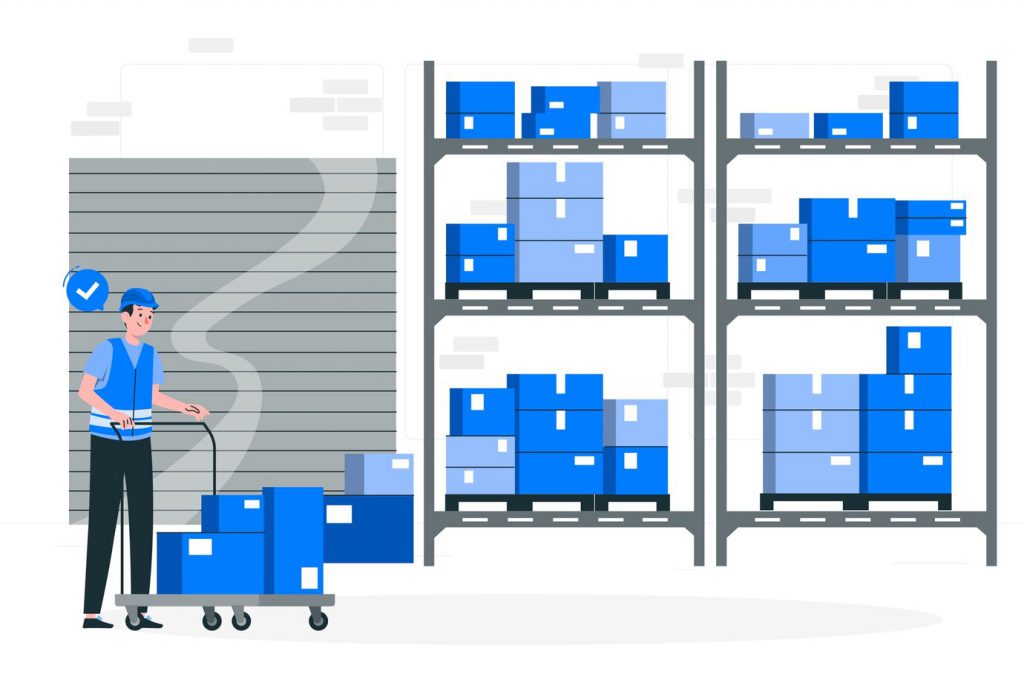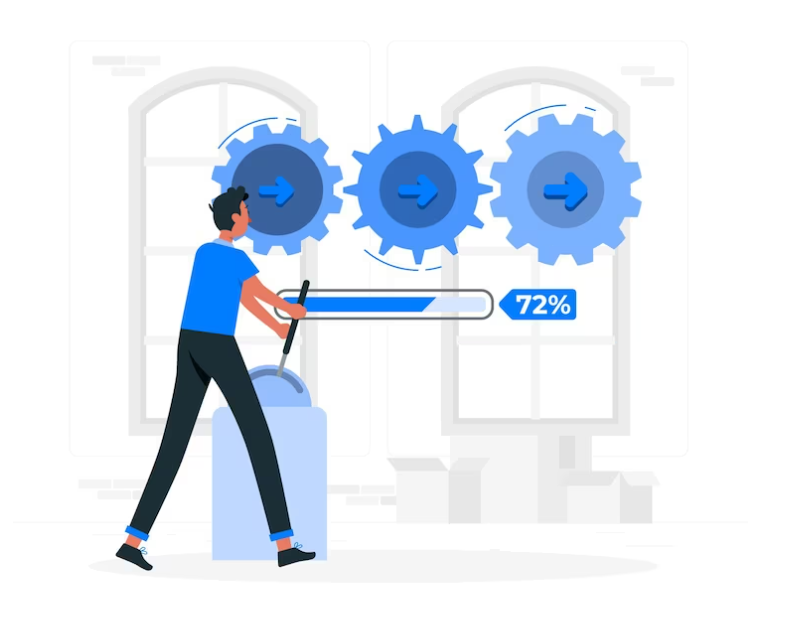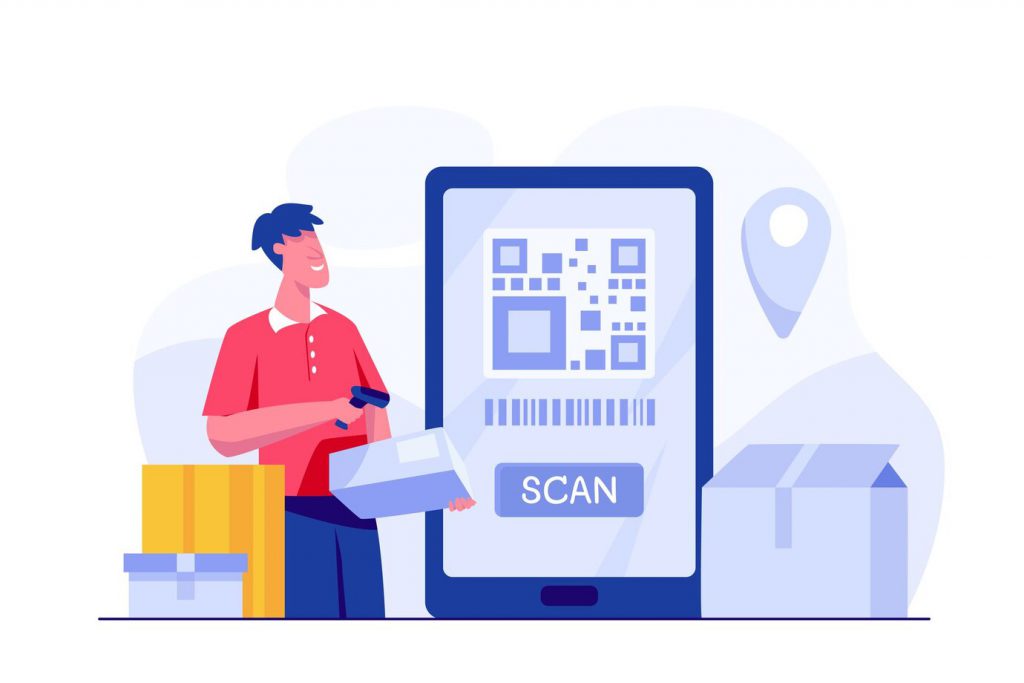RPA IN SUPPLY CHAIN & INVENTORY MANAGEMENT

Finding affordable strategies to increase efficiency is crucial when it comes to supply chain and inventory management.
How can efficiency be increased without completely reorganizing your current workflow and adding more employees? In three words: automation of robotic processes (RPA).
When it comes to inventory and supply chain management, robotic process automation (RPA) technology is incredibly efficient. It can decrease operational risk, boost efficiency, and cut costs by eliminating the need for time-consuming human operations.
Let’s examine more closely.
RPA: WHAT IS IT?
RPA automates business operations that are often completed manually by employees using software. An enterprise can set up “bots” to handle any repetitive, boring business processes that would normally take up your team’s time and squander expensive resources by using RPA technologies.
RThese procedures can be completed more quickly by an organization using RPA technology than if they were carried out manually. This lowers operating costs and frees up your team to concentrate on higher-value, higher priority work.
RPA'S BENEFITS
When it comes to inventory and supply chain management, RPA offers many advantages, including lower costs and more efficient procedures. The following are a few instances of the biggest advantages your company could have when deploying automation solutions:

DITILLATE MANUAL OFFICIAL TASKS
RPA allows your team to focus on more critical duties by automating repetitive processes like data entry, payment processing, inventory management, and purchase order input. This frees up staff time for other critical work.

DETERMINE AND SET UP RECURRING PROCEDURES
Every time an RPA bot executes a specific task, it always generates thorough audit logs. You can perform your own analysis and discover other methods to increase productivity and save expenses by using these logs, which can be quite beneficial and provide you with useful insights and data.
IMPROVE WORKER SATISFACTION
Staff members frequently experience fatigue, inefficiency, and lack of motivation when assigned laborious, repetitive, and time-consuming activities.
Your employees will feel more productive overall and have more time to focus on more worthwhile, fulfilling work if RPA bots are available to handle these kinds of chores.

REDUCTION OF RISK
RPA bots are impervious to factors that frequently cause human staff members to make mistakes, such as exhaustion, distraction, and ignorance. When RPA is used to support supply chain management, the likelihood of expensive mistakes happening is greatly decreased.
AUTOMATED MANUAL PROCESSES USING RPA
ORDER AND PAYMENT PROCESSING
Without RPA, creating invoices and performing pre-compliance checks are just two of the manual tasks involved in processing orders and payments. This causes a lack of visibility, slows down the process overall, and raises the possibility of inconsistencies and human mistake.
RPA bots handle the entire process from beginning to end, allowing you to concentrate on increasing the volume of orders and payments that need to be completed.
CREATIVE SALES ORDERING
It takes a lot of effort and might be error-prone to manually handle buy orders and create sales orders.
This problem is solved by RPA, which processes contracts and forms in a variety of formats and checks that the requirements are met. RPA can also increase the productivity of your team by establishing an automated approval procedure throughout the sales order process.

DEMAND AND SUPPLY FORECASTING
Forecasting supply and demand has never been a simple task. When carried out manually, employees must gather information, arrange it into visually appealing formats, evaluate it, and then get in touch with the right staff members.
In order for your team to handle supply and demand planning more successfully, RPA bots can be installed to check various tasks including warehouse, inventory, and procurement. These bots can gather data in just a few minutes.
MANAGEMENT OF WAREHOUSE AND INVENTORY
Manufacturers need to keep a close eye on inventory levels to make sure there is sufficient inventory to fulfill demand.
But regrettably, mistakes are extremely likely to happen when running a warehouse, especially when it comes to inventory control and order receipt, packaging, and shipping.
RPA bots can easily and more accurately execute inventory-related tasks like ordering fulfillment, restocking inventory, allocating inventory, and even computing discounts.

DATA ENTRY
A significant worry for many retail businesses that use data is lack of integration.
When it comes to data entry, RPA is a very powerful tool. It can be used to collect, enter, and analyze data from multiple linked systems, giving you important insights about your company and the effectiveness of your operations.
ANTICIPATED MAINTENANCE
It’s critical to monitor the condition of your equipment in order to guarantee optimal supply chain efficiency.
RPA can assist with real-time asset monitoring as well as anticipating and facilitating any necessary maintenance.
This is how it operates:
Real-time sensor data retrieval and cloud analysis are handled by RPA bots. RPA bots can plan maintenance and notify all necessary stakeholders based on the outcome.

LOGISTICAL ASSISTANCE
RPA monitors orders and updates the order handover details across all systems, which can significantly increase efficiencies and reduce errors at the delivery stage of the supply chain.
SERVICES AFTER SALES
Maintaining a positive relationship with customers after a deal is made is crucial to getting their repeat business.
RPA has several applications that might enhance your customers’ experiences.
Here are few instances:
- When a consumer submits a service request, a chatbot may communicate with them and carry out specific tasks based on the request.
- In the event of delays or other problems, RPA bots can notify customers, improving their entire experience.
- Orders may be tracked in real-time by RPA bots, which can also automatically alert customers when an order has shipped and is on its way to them.

STARTING ORDERS FOR PURCHASE
When supply starts to decline, RPA bots can be configured to generate a purchase order in response to inventory level monitoring. As a result, you never have to worry about running out of inventory before you can get more.
MANAGEMENT OF ORDER
The majority of the order management process, including load matching with transport availability, can be streamlined by RPA.
To help with order management, RPA may also aggregate data from many systems, including web portals, Excel sheets, and organizational management modules.

LINKS WITH SUPPLIER
To create a more robust and adaptable supply chain, RPA can be used to automate supplier relationships.
RPA bots, for example, can be used to generate requests for quotes (RFQ) or proposals (RFP), interact with suppliers, and even evaluate documents.
SELECTION OF VENDORS
By doing credit and compliance checks, RPA bots can expedite the vendor selection process and arrange data from vendor documentation.

ASSOCIATE ON-BOARDING
RPA can be used to quickly verify the requirements and process contracts and paperwork in a variety of formats. By establishing an automated approval system, these bots can even increase the team’s productivity.

FAILURES IN APPLYING RPA TO SUPPLY CHAIN & INVENTORY MANAGEMENT
Like any process, sales teams’ manual labor costs time that could be used for lead nurturing and deal closure. Employees feel less motivated and productive as a result.
Many organizations continue to handle their inventory and supply chain procedures manually, which presents a number of issues, despite the many advantages that robotic process automation (RPA) brings to all sorts of businesses.
Here are few instances:
INACCURATE INFORMATION
A catastrophe could result from inaccurate inventory estimations or data. Unfortunately, these kinds of errors are unavoidable when manual techniques are used. Because RPA bots can’t make mistakes made by humans, they can help you guarantee accuracy throughout your supply chain.
TEMPORULY WASTED
The limited speed of human labor means that labor-intensive manual procedures will only cause your supply chain to lag. From the easiest to the most complicated jobs, RPA bots can automate them and do them significantly faster, freeing up your time to concentrate on higher priority activities.
INSUFFICIENT PRODUCTION
Daily execution of the same boring, repetitive duties can cause disengagement among employees and low job satisfaction.
Your team will be able to focus on more complicated activities that will increase their engagement and productivity by utilizing RPA technology, freeing them from the burden of these manual operations.
